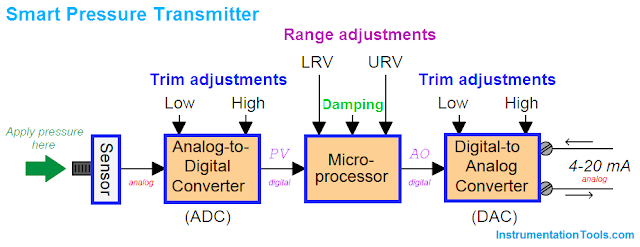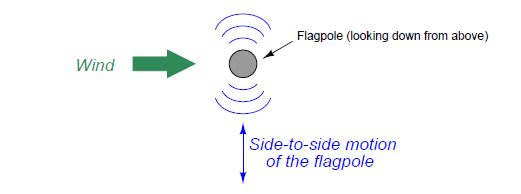BỘ CHUYỂN ĐỔI THÔNG MINH ( SMART TRANSMITTER) - LRV VÀ URV

Sự xuất hiện của các thiết bị đo ' thông minh' là một bước tiến lớn đối với đo lường trong công nghiệp. Các thiết bị này có tích hợp khả năng chẩn đoán, độ chính xác cao hơn (do hiệu chỉnh số cho cảm biến không tuyến tính) và khả năng có thể giao tiếp với máy chủ để báo cáo nhiều thông số khác nhau. Một sơ đồ khối của một transmitter áp suất ( pressure transmitter) trông giống như thế này Điều quan trọng ở đây là cần chú ý đến là làm cách nào để hiệu chỉnh thiết bị này, và so sánh nó với sự đơn giản trong hiệu chỉnh đối với một transmitter áp suất tương tự. Lưu ý là đối với bộ chuyển đổi tương tự (analog transmitter) thì cách điều chỉnh, hiệu chuẩn (calibration) chỉ là thực hiện cài đặt điểm "ZERO" và điểm " SPAN". Còn đối với trường hợp bộ chuyển đổi thông minh ( smart transmitter). Chúng ta không chỉ đặt giá trị dưới và giá trị trên của dải đo, mà chúng ta có thể hiệu chỉnh các mạch chuyển đ...
